Agility training for dogs is a fantastic way to enhance your dog's physical fitness, mental sharpness, and the bond you share. Agility courses consist of various obstacles like weave poles, tunnels, and jumps, which your dog must navigate under your direction. This sport not only builds your dog's confidence but also provides a great outlet for their energy.
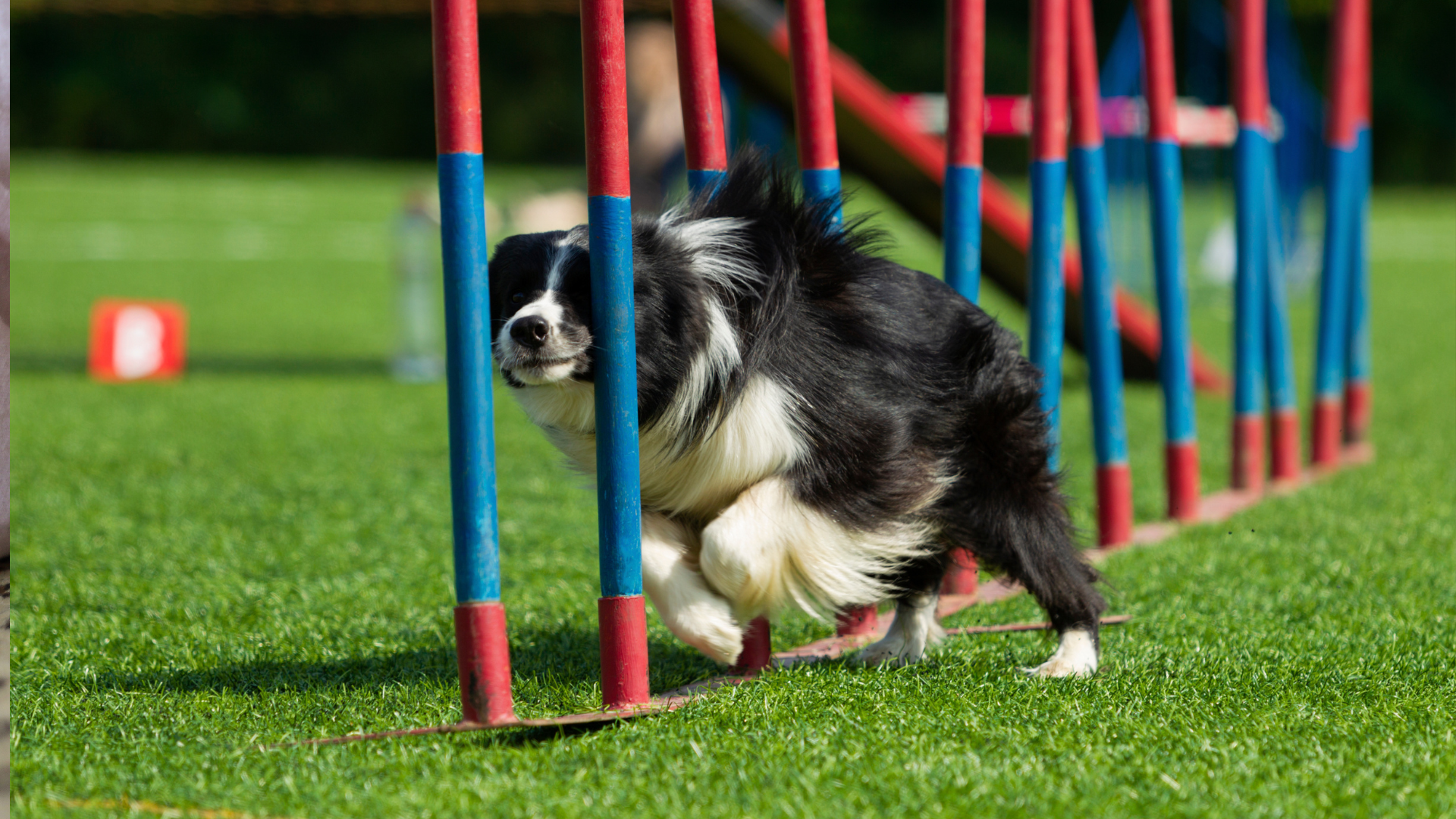
The training begins with teaching basic commands and gradually introduces obstacles such as tunnels, tires, and see-saws. Dogs of all breeds and sizes can enjoy agility, as sessions can be tailored to suit individual fitness levels and abilities. Consistent practice and positive reinforcement are key to success in agility training.
For those new to the sport, there are many resources available to guide you, including classes, online tutorials, and community clubs. Ensuring that your dog stays on a mat, as mentioned in this guide, can be an excellent starting point for home-based practice. Dive into this exciting journey and watch your dog thrive both physically and mentally through agility training.
Getting Started with Dog Agility Training
Dog agility training involves guiding your dog through a course of obstacles that can include jumps, tunnels, and weave poles. Understanding the training techniques, choosing the right dog breed, having the essential equipment, and setting up your first course are critical steps.
Understanding Agility Training
Agility training is a competitive sport that requires a handler to navigate their dog through a timed obstacle course. The dog must rely on cues from the handler's voice and body language. This type of training improves a dog's physical fitness, coordination, and overall behavior. It also strengthens the bond between the dog and handler, making it a popular choice for active and engaged pet owners.
Choosing the Right Dog Breed for Agility
Not all dog breeds are equally suited for agility. Breeds like Border Collies, Shetland Sheepdogs, and Australian Shepherds are known for their agility prowess. They possess the necessary speed, intelligence, and enthusiasm. However, smaller breeds like Jack Russell Terriers and Papillons can also excel in agility courses. When choosing a breed, consider the dog's size, energy level, and trainability.
Essential Equipment for Beginners
Starting agility training requires some basic equipment. Essential items include:
- Jumps: Adjustable bars that the dog must leap over.
- Tunnels: Flexible and collapsible tubes for the dog to run through.
- Weave Poles: A series of vertical poles that the dog weaves through.
- Seesaws: A balanced beam that the dog has to walk over.
This equipment can be purchased online or built with a bit of DIY effort to keep costs manageable.
Setting Up Your First Agility Course
When setting up your first agility course, start with a simple layout to avoid overwhelming your dog. Use items like an open box for a makeshift tunnel or PVC pipes for jumps. Place the obstacles in an open, flat area and ensure there is enough space for your dog to move freely. Gradually increase the complexity of the course as your dog becomes more confident and skilled. Always prioritize safety, avoiding sharp objects or unstable equipment.
This initial setup will help you and your dog get accustomed to the basics of agility training before moving to more complex courses and formal competitions.
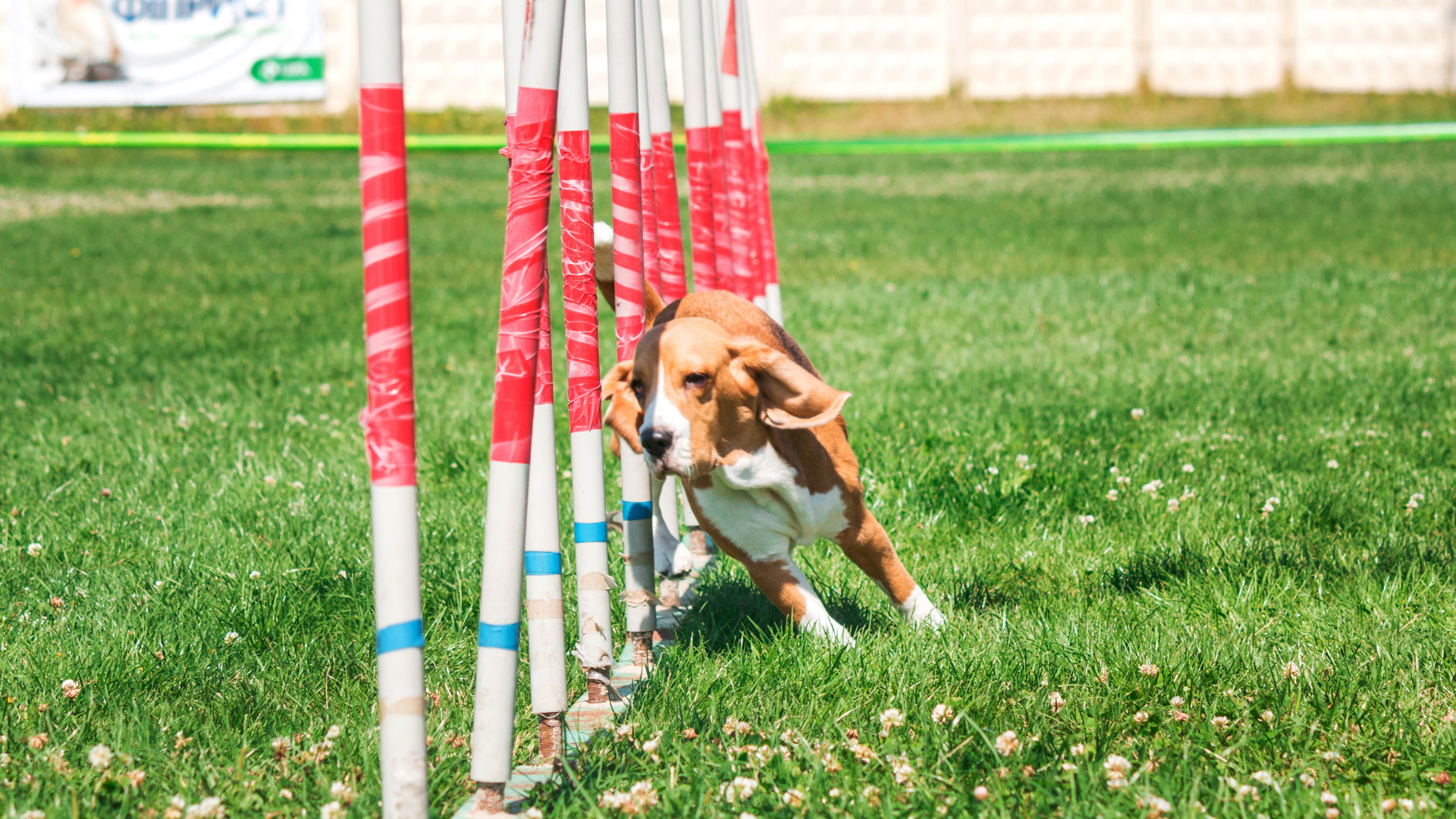
Training Your Dog for Agility
When training your dog for agility, it is crucial to focus on basic obedience and socialization, introduce agility obstacles gradually, and incorporate playful elements to develop their skills. Understanding the differences between home training and agility classes can also influence the effectiveness of the training process.
Basic Obedience and Socialization
Basic obedience forms the foundation of successful agility training. Dogs need to reliably respond to commands like sit, stay, come, and heel. These commands ensure control and safety during more complex agility tasks.
Socialization is equally important. Dogs must be comfortable around other dogs and people to focus during agility training and trials. Early socialization, including exposure to various environments and stimuli, helps build a dog's confidence.
Positive reinforcement techniques such as treats, praise, and play should be used to encourage desired behaviors. Consistency and patience are key, as dogs learn at different rates. Regular practice solidifies these fundamental skills and creates a strong bond between the dog and handler.
Introducing Agility Obstacles
Introducing agility obstacles like tunnels, jumps, and weave poles should be done step-by-step. Start with low jumps and short tunnels to prevent overwhelming the dog. Provide clear cues and rewards to guide them through each obstacle.
Initially, use a leash to help direct your dog through the course. This control prevents confusion and builds the dog’s confidence. Gradually, as the dog becomes familiar with each obstacle, the leash can be removed.
Praise and treats play a critical role in this phase. They help reinforce positive behaviors and make the training enjoyable. Repetition and patience are essential to ensure the dog masters each obstacle before moving on to more complex courses.
Developing Your Dog's Skills Through Play
Incorporating play into training sessions helps develop your dog's agility skills. Games like fetch, tug-of-war, and hide-and-seek encourage physical and mental stimulation. These activities enhance coordination, problem-solving skills, and teamwork between the dog and handler.
Interactive toys and puzzles can also be used to keep the training dynamic. They stimulate the dog's mind and improve their ability to concentrate on tasks. Regular play sessions make training fun, reducing stress and maintaining the dog’s interest.
Balance and coordination exercises, like walking on different surfaces and balancing on uneven grounds, prepare dogs physically for agility obstacles and improve their overall performance.
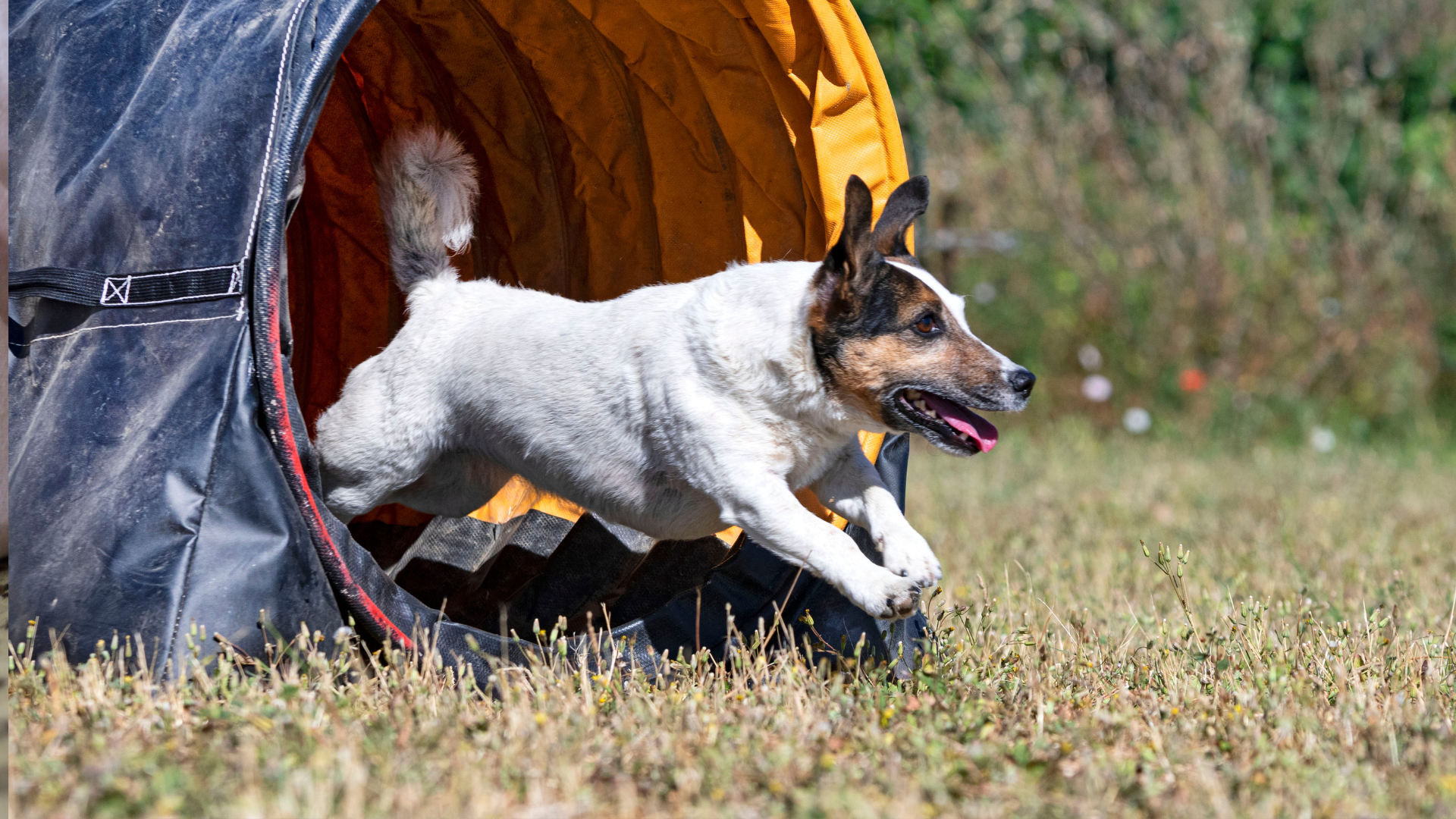
Home Training Vs. Agility Classes
Training agility at home offers flexibility and convenience. Basic obstacles can be created using common household items. Training in a familiar environment can reduce anxiety and allow for a customizable training pace.
However, professional agility classes provide structured guidance from experienced trainers. These classes offer access to a variety of specialized equipment and foster socialization with other dogs. Trainers provide valuable feedback and techniques to improve training effectiveness.
Combining home training with periodic agility classes often yields the best results. This approach allows for continuous practice in familiar settings while benefiting from professional insights and advanced obstacle exposure.
By focusing on these key areas, dog owners can effectively train their pets for agility, ensuring a rewarding experience for both the dog and the handler.
The Agility Training Process
Agility training for dogs involves building confidence and trust, performing agility drills and conditioning, mastering various obstacle courses, and preparing for competitions. This process ensures that the dog is well-prepared for agility trials and can navigate through different agility equipment effectively.
Building Confidence and Trust
Confidence and trust form the foundation of successful agility training. Handlers should focus on creating a positive environment where the dog feels safe and encouraged.
Begin with basic obedience training to establish clear communication and discipline. Use treats and praise to reward your dog for following commands. This builds the dog's confidence and strengthens the dog-handler bond.
Incorporate simple agility equipment like tunnels and tire jumps to gradually build the dog’s familiarity with obstacles. Short, successful sessions help build trust and reduce anxiety.
Frequent practice in different environments can also help the dog adapt to various settings, which is crucial for agility competitions. Consistency and patience are key in this initial phase.
Agility Drills and Conditioning
Agility drills and conditioning are essential for developing the dog’s physical capabilities and coordination. Rotate through different drills to keep the training sessions engaging.
Start with basic drills such as running through tunnels, navigating weave poles, and jumping over hurdles. Gradually introduce more complex equipment like the seesaw and the A-frame.
Conditioning exercises, such as running and jumping, help build the dog’s strength and endurance. Short, high-energy sessions are preferable to avoid tiring the dog out.
Incorporating exercises like the dog walk and pause table into drills helps improve balance and control. Consistent practice will enhance the dog’s agility, coordination, and overall performance in agility trials.
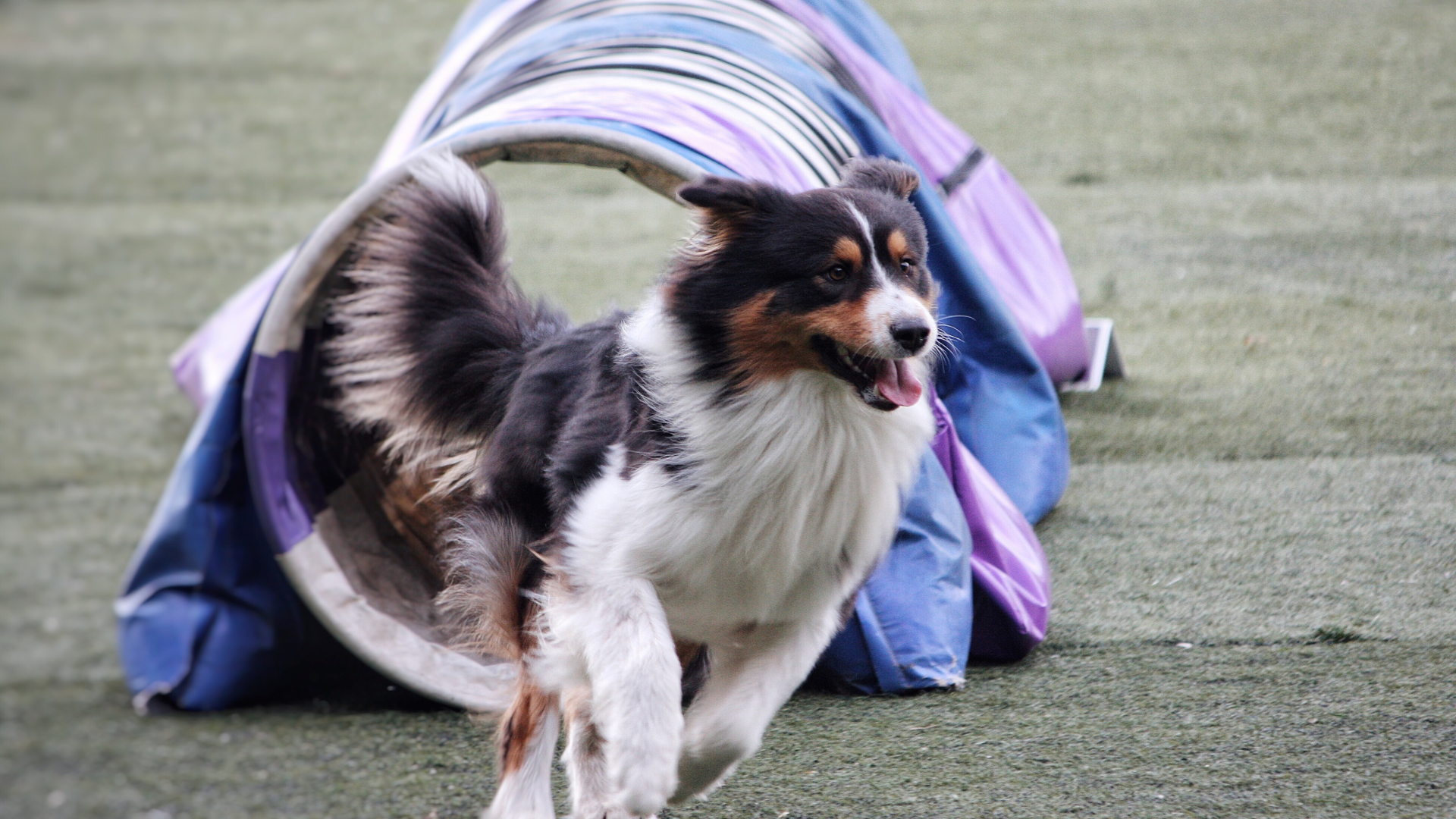
Mastering Obstacle Courses
Mastering obstacle courses requires the dog to navigate through an entire set of agility equipment with ease. Consistent practice and clear communication are paramount.
Design courses that vary in difficulty and include different obstacles like tunnels, tire jumps, and weave poles. Gradually increase the complexity as the dog masters each element.
Use voice commands and body language to guide the dog through the course. Practicing with different layouts helps the dog learn to respond quickly and accurately to cues.
Time the runs to track improvement and identify areas for focus. Regularly adjust the course to keep it challenging and stimulating for the dog, ensuring continued growth and skill development.
Preparing for Competitions
Preparing for agility competitions involves refining skills and familiarizing the dog with the competitive environment. Participation in classes and agility trials can be highly beneficial.
Simulate competition conditions by setting up mock trials that replicate the actual event layout and timing. This helps the dog acclimate to the pressure and excitement of competitions.
Pay attention to the dog’s health and energy levels. Proper rest, nutrition, and hydration are crucial for optimal performance. Ensure the dog is comfortable with traveling to different venues.
Classes led by experienced trainers provide valuable insights and allow the dog to practice with other dogs. This also helps improve socialization and reduces competition-day anxiety. Focusing on physical readiness and mental composure will set the stage for a successful competitive debut.
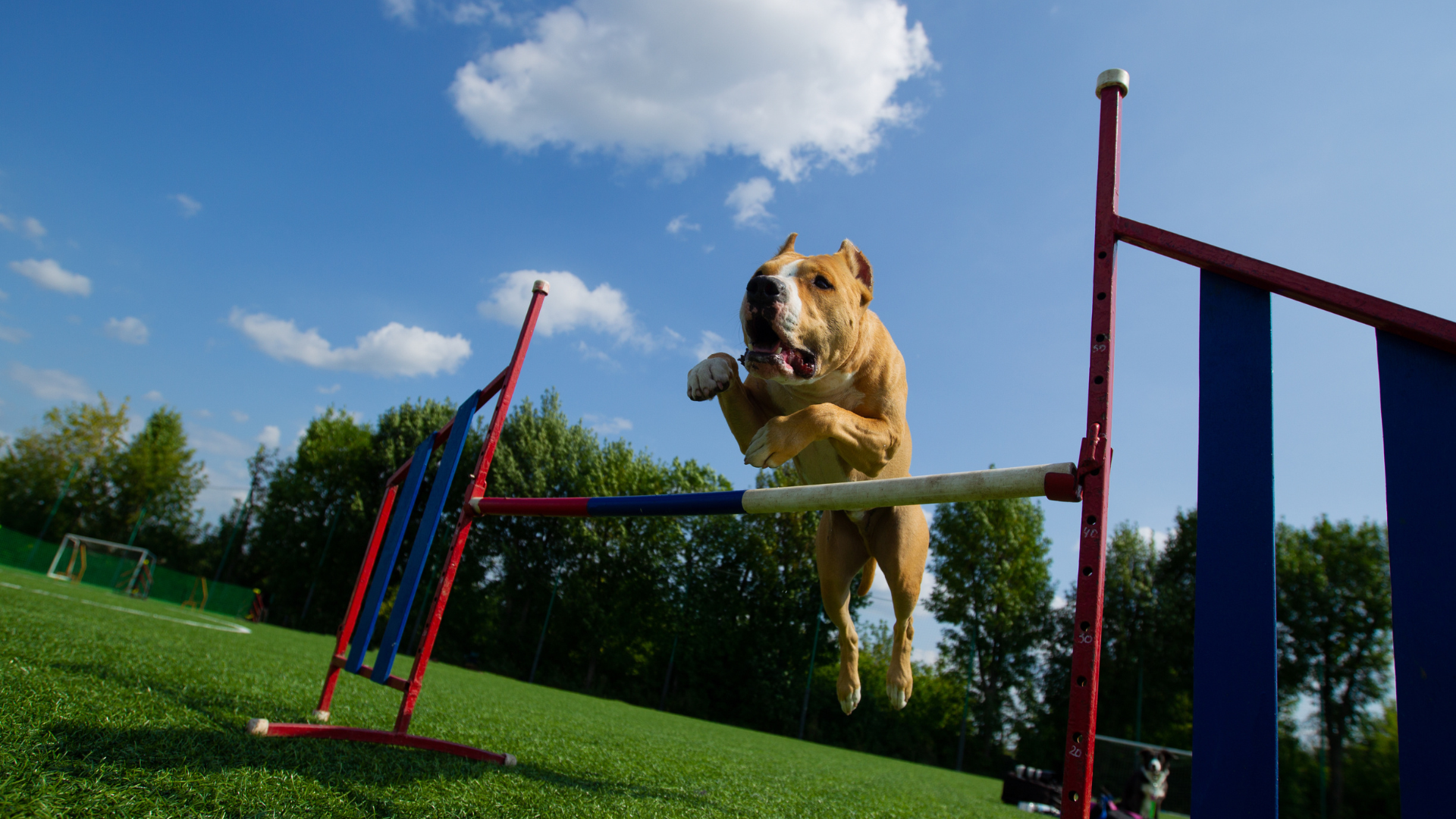
Advanced Agility Training Techniques
In advanced agility training, enhancing your dog's performance with target training, tackling complex obstacles, and honing speed and precision are essential.
Enhancing Performance with Target Training
Target training can significantly improve a dog's ability to navigate agility courses. This technique involves teaching the dog to touch a specific target with their nose or paw. Using positive reinforcement, handlers reward the dog when they successfully reach the target.
Keywords:
- Jumping: Helps dogs perfect their leaps through targeted practice.
- Problem-solving skills: Enhances canine cognitive abilities as they figure out how to reach the target.
Effective for breeds like the Border Collie, which excel in agility, target training builds precision and trust between the canine and the handler.
Complex Obstacle Training
Training dogs for complex obstacles, such as weave poles, tunnels, and seesaws, requires patience and systematic instruction. Weave pole training can be particularly challenging and involves teaching the dog to maneuver between poles quickly and accurately.
Key activities:
- Tunnel training: Encourages problem-solving and confidence as dogs learn to navigate through dark, confined spaces.
- Seesaws: Focuses on balance and timing, integral for navigating pivoting surfaces.
Techniques:
- Start with straight tunnels and gradually introduce curved tunnels.
- Use clicker training and treats to teach the seesaw movement in small steps.
Speed and Precision in Dog Agility
Combining speed and precision is crucial for advanced agility training. Handlers must fine-tune their commands to ensure dogs can perform swift and accurate movements.
Focus areas:
- Broad jump and tire jumps: Test the dog's jumping ability and coordination.
- Timed trials: Measure and improve speed through repeated timed runs.
Training methods:
- Incorporate short, intense training sessions to maintain the dog's enthusiasm and avoid fatigue.
- Use visual and verbal cues consistently to minimize confusion.
Enhancing a dog's agility skills involves meticulously structured training programs, positive reinforcement, and a focus on developing both physical and cognitive abilities.
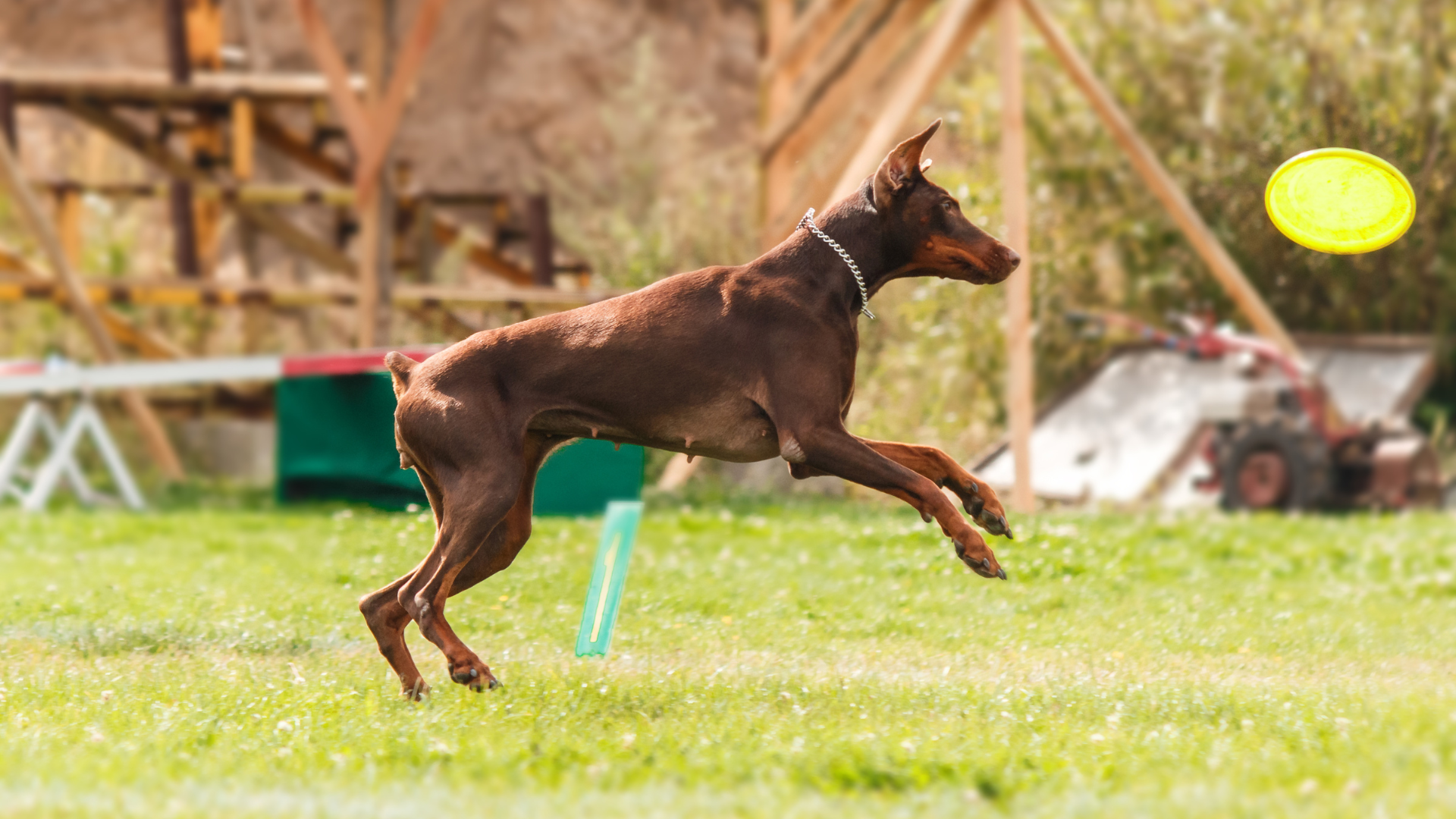
Health and Safety in Agility Training
Ensuring your dog's health and safety during agility training is paramount. It's important to understand your dog's physical limits, avoid common injuries, and maintain routine veterinary checks.
Understanding Your Dog's Physical Limits
Different dog breeds have varying physical abilities. Border Collies and Retrievers are known for their high energy and agility, making them ideal candidates for agility training. On the other hand, smaller breeds like Chihuahuas may need modified exercises to accommodate their size.
Pay attention to your dog’s behavior. Signs of fatigue or discomfort, such as excessive panting or limping, indicate they need a break. Working dogs often have higher stamina but still require careful monitoring to avoid overexertion. Always start with basic exercises and gradually increase intensity to match your canine companion’s capabilities.
Avoiding Common Injuries and Health Issues
Injuries such as sprains, ligament tears, and joint issues are common in agility training. Ensure that the training surface is not too hard or slippery to prevent slips and falls. Obstacles should be checked regularly for safety, ensuring no sharp edges or unstable components.
Proper warm-up and cool-down routines can help prevent muscle strains. Incorporating exercises that promote mental stimulation and focus can minimize the risk of accidents. Fit and well-conditioned dogs are less prone to injuries. Regularly observing your dog during training sessions for signs of discomfort can catch potential health issues early.
Routine Checks with the Veterinarian
Routine veterinary visits are crucial to maintaining your dog’s health. A veterinarian can assess if your dog is in the proper physical condition for agility training. Dogs should be in good health and proper weight to avoid exhaustion and health risks, particularly with high-energy breeds like Border Collies and Retrievers.
Regular check-ups can help identify any underlying health issues that could be exacerbated by physical exercise. Veterinarians can provide tailored advice on suitable exercises and necessary dietary adjustments. Regular vaccinations and parasite control are also important to avoid health complications that could disrupt training routines.
Community and Resources
Dog agility training is more effective when engaging with a community and utilizing various resources. These can offer support, information, and motivation for both you and your dog.
Joining Agility Training Communities
Joining dog agility training communities can significantly enhance your experience. Groups such as those organized by the AKC or USDAA provide access to experienced trainers and enthusiasts, which can be invaluable.
Local dog clubs often host events and trials, giving you a chance to observe and learn from others. Online forums and social media groups can also be great places to ask questions, share achievements, and obtain advice.
Membership in these communities can provide not only support but also updates on the latest trends and techniques in the sport.
Resources for Continuous Learning
Continuous learning is key in dog agility training. Free and paid resources like eBooks, training manuals, and online courses can help you stay informed and improve your training regime.
The American Kennel Club (AKC) offers a PDF guide on agility training for beginners. Websites such as Sniffspot and Top Dog Tips provide comprehensive beginner guides and insights into advanced techniques.
Watching videos on platforms like YouTube can also offer practical demonstrations of training exercises. These resources can help you to keep your knowledge current and your training sessions engaging and effective.
Frequently Asked Questions
This section provides specific answers to common questions about starting dog agility training, including necessary equipment, appropriate training age, and effective exercises.
- What are the initial steps to introducing my dog to agility training?
- Begin by familiarizing your dog with basic obedience commands such as sit, stay, and come. Gradually introduce simple obstacles like low jumps and short tunnels, rewarding your dog for success.
- What basic equipment is needed for starting dog agility training at home?
- Basic equipment includes jumps, tunnels, and weave poles. Items like a seesaw, A-frame, and tire jumps can also be beneficial. These tools provide a varied training environment for your dog.
- At what age is it appropriate to begin training a dog for agility?
- Puppies can start with basic obedience training and low-impact exercises. Formal agility training is usually recommended once the dog is around one year old to avoid stress on developing joints.
- What are some effective dog agility training exercises for beginners?
- Start with simple tasks like running through short tunnels, low jumps, and weave poles. Gradually increase the complexity by combining multiple obstacles, always ensuring to keep training positive and engaging.
- How can I find dog agility training classes in my area?
- Look for local dog training centers, pet stores, and community centers that offer agility classes. Online resources and forums can also help locate training clubs and events near you.
- How often should I practice agility training with my dog?
- Practice sessions should be short and frequent, around 10-15 minutes several times a week. Consistency is key, but also ensure your dog has rest periods to prevent injuries and maintain enthusiasm.




